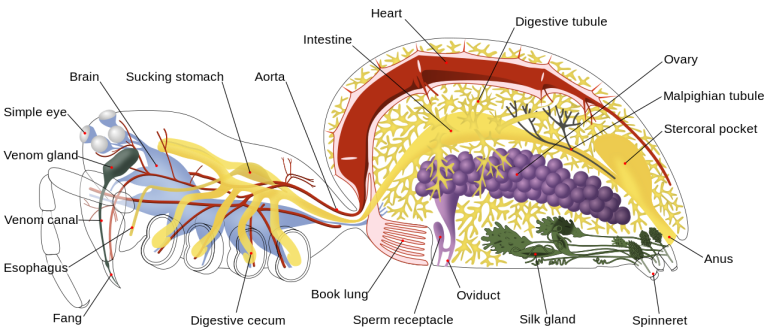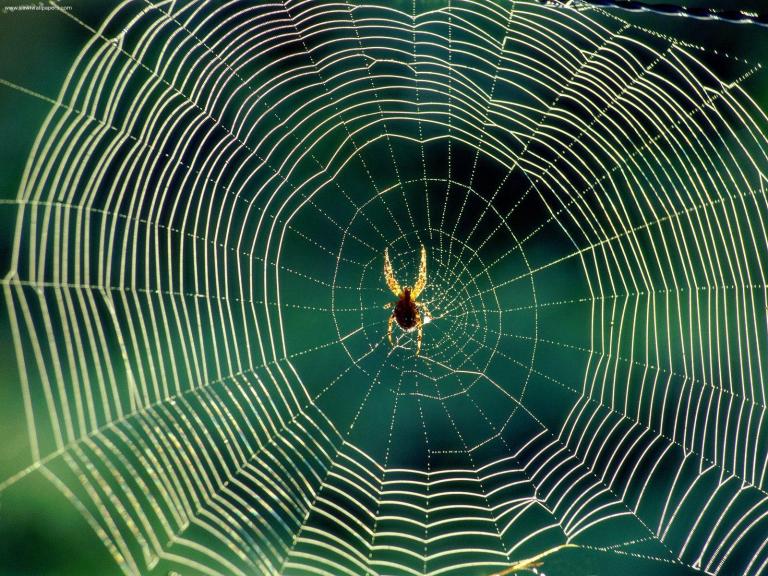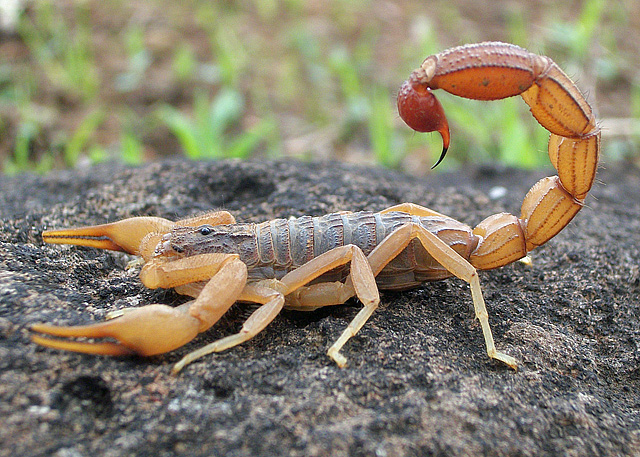Itsy bitsy nope.
So you would think after living in Australia for as long as I have that I would be comfortable with these critters but nope.
There are over 80,000 arachnid species which are insane. They compromise of many things such as spiders, mites, ticks, scorpions etc. I love nature.
They are terrestrial and are quite good predators. I mean some humans are even scared of them.
They are also part of Subphylum Chelicerata which had the Horse Shoe crab!
ORDER ARANAEA

Spiders are familiar to most of us, and they have some cool things about them.
The head and the thorax are fused together (prosoma) while there is a teeny waist (pedicle) and abdomen (opistosoma). There are the basic features which include the chelicerae and pedipalps to help with food and 4 pairs of walking legs, but there is no antennae in this class.
They breathe similar to the Horseshoe crab but instead of book gills they have book lungs as they are terrestrial. The air enters through a slit and it circulates through the book lungs. There are two spaces for the blood and the air and there is a spiracle which small opening. There was a study which suggested that “CO2 retained in the spiders while the spiracles were closed, was released in bursts when the spiracles opened” (http://www.nrcresearchpress.com/doi/abs/10.1139/z69-069?journalCode=cjz#.VzrD8YR97IU).

Pee time?
There is a coxal gland which is essentially a modified nephridia which removes metabolic wastes. There are Malpighian tubules too which take up calcium.
Spiders release a dry excretory product in order to keep more water.
Circulation?
They have an open system with the heart located in the dorsal opisthosoma. It is a large heart which spans across the opisthosoma. There is an aorta which pumps into the anterior and posterior end, with large ventral sinuses.
How do they sense?
They have simple eyes which is basically used to detect movement and images. They often have 8 pairs of eyes. All the more to see you with my dear.
There is an interesting feature known as cuticle mechanoreceptors which helps the spider detect vibrations on the web so they can sense when prey has arrived.
Silky webs
 The webs are a cool characteristics of spiders, with their spinnerets (located in the back area) which can modify and their silk glands which hardens the web. There is protein in the silk glands which is then threaded as it is pulled to form a beautiful spider web.
The webs are a cool characteristics of spiders, with their spinnerets (located in the back area) which can modify and their silk glands which hardens the web. There is protein in the silk glands which is then threaded as it is pulled to form a beautiful spider web.
Food time?
The webs can help capture prey to give them food, but some spiders don’t spin webs so they have to chase or ambush prey like those Huntsman Spiders.
Their feeding starts by their chelicerae injecting venom into the prey, which immobalizes the prey and then there is external digestion which is when the enzymes go onto the food.
Some spiders are able to chew with the pedipalps base, and then there is the stomach which has “imbibe liquefied food-pumping”.
Sexy time?
Now they are diecious so they need both male and female to help make babies. The gonads are located near the abdomen and it opens ventrally!
The male spins a web and places their sperm on the web. He then picks the sperm up and stores it in the pedipalp.
He does a sexy dance which makes the female go “oo la la” and then plucks the web. He then proceeds to copulate!
The sperm enters the genital opening and then it enters the female seminal receptacle (a storage unit).
The eggs will then be laid onto a silken cocoon, and it will be placed somewhere whether it be on a web, on a plant or even on the mother’s back.
They will then be born and have 1 moult as a a youngen and leave the cocoon. After 4-5 moults they will becoming a sexually capable adult.
ORDER SCORPIONIDA

The name pretty much gives away that this is the group of scorpions! They have 3 tagmatas which is the Cephalothorax, Preabdomen (mesosoma with 7 segments) and Postabdomen with 5 segments and a stinger.
The Cephalothorax has 4 pairs of legs, eye, chelicerae and pedipalps (which are made of chelate and known as “pinchers“).
Food time?
They grasp prey with their pedipalps and sting them with the stinger to inject it with venom! They then rip the prey apart and there is some external digestion of them.
They are brutal as heck.
ORDER ACARI

There are 40,000 species of these ticks and they have a fused cephalothorax and abdomen. There is no actual external segmentation which is interesting.
They have four pairs of legs, and also a Capitulum which comprises of the mouth and some feeding parts. This has anterior projections near the mouthparts such as chelicerae for piercing and tearing, and pedipalps.
So it has been fun learning about Class Arachinida but there is also another cool class I am keen for: SUBPHYLUM CRUSTACEA.
Like crabs and stuff that will be cool!
